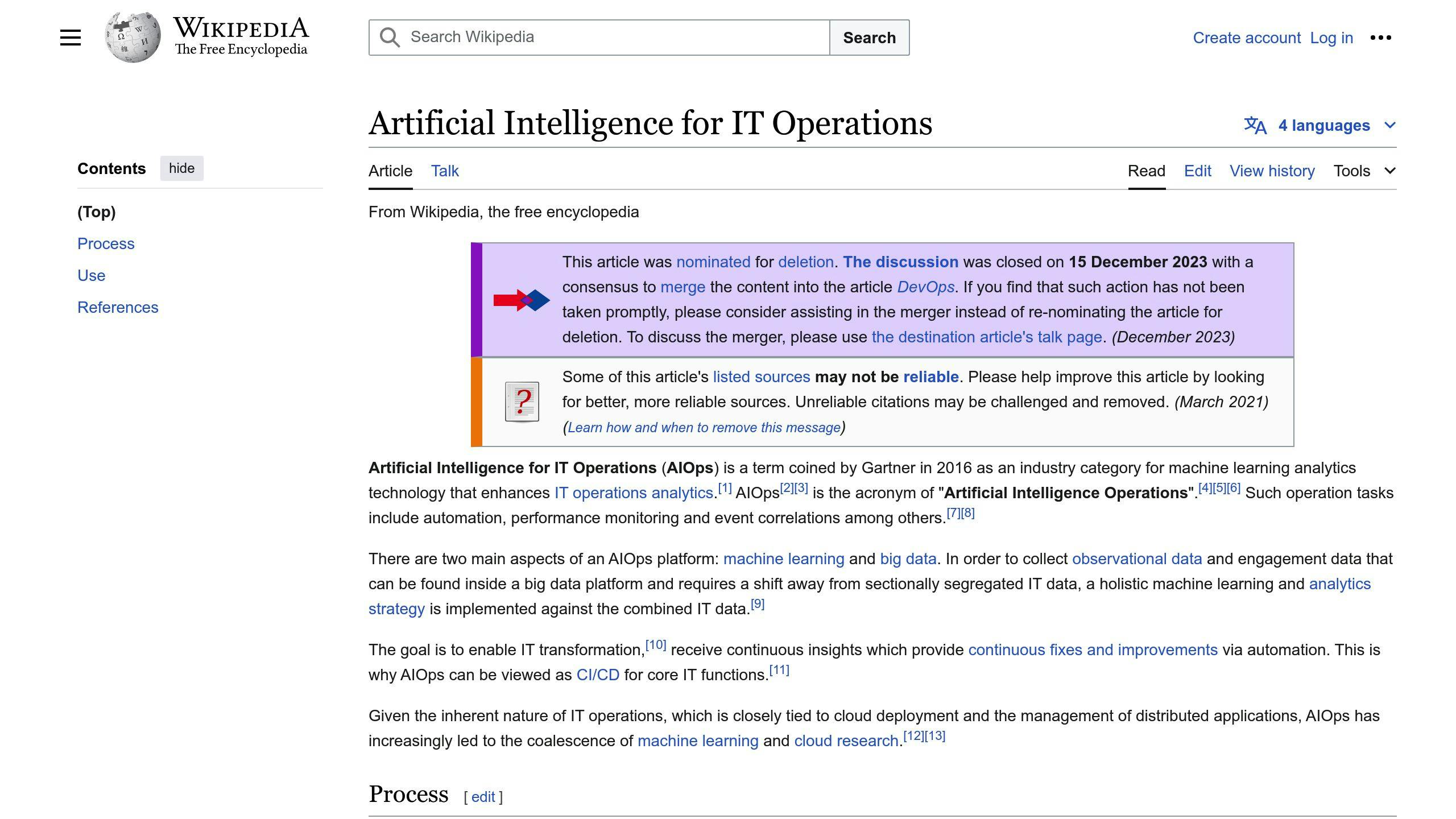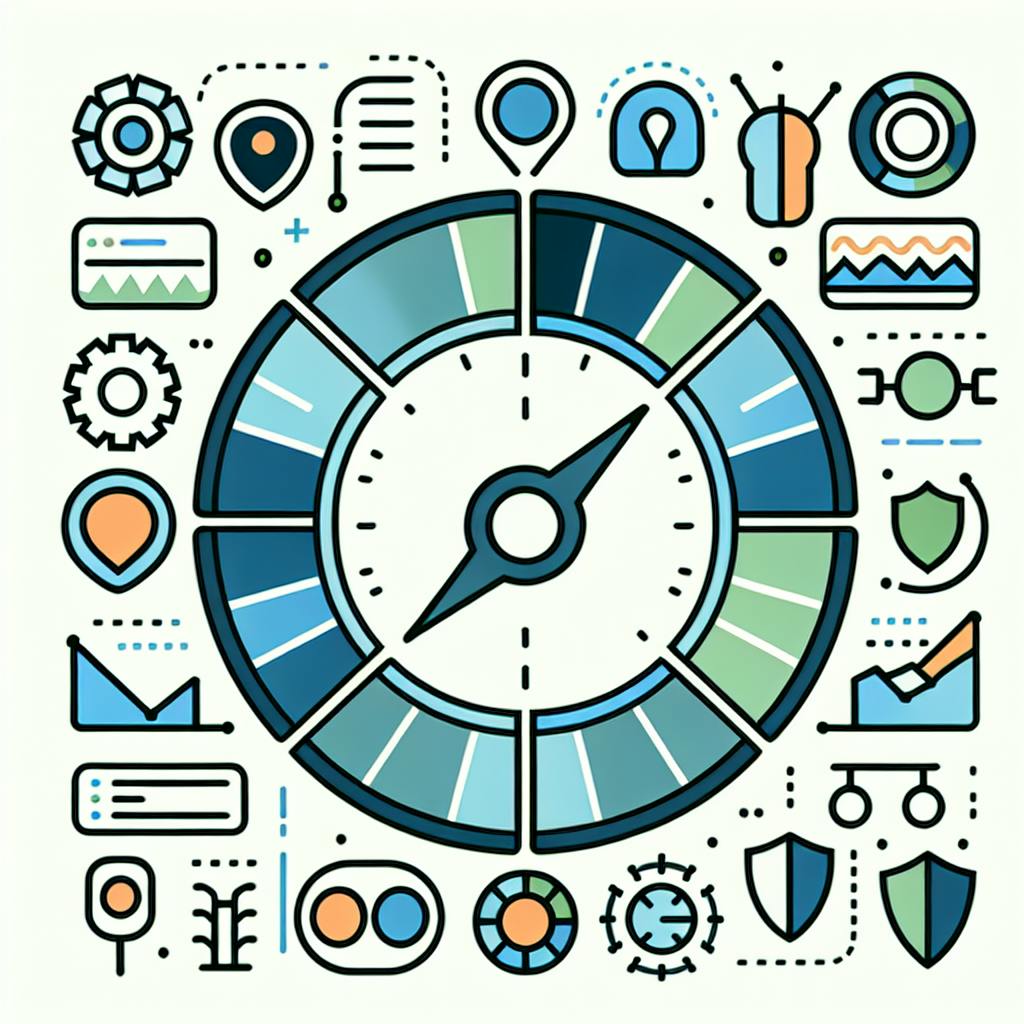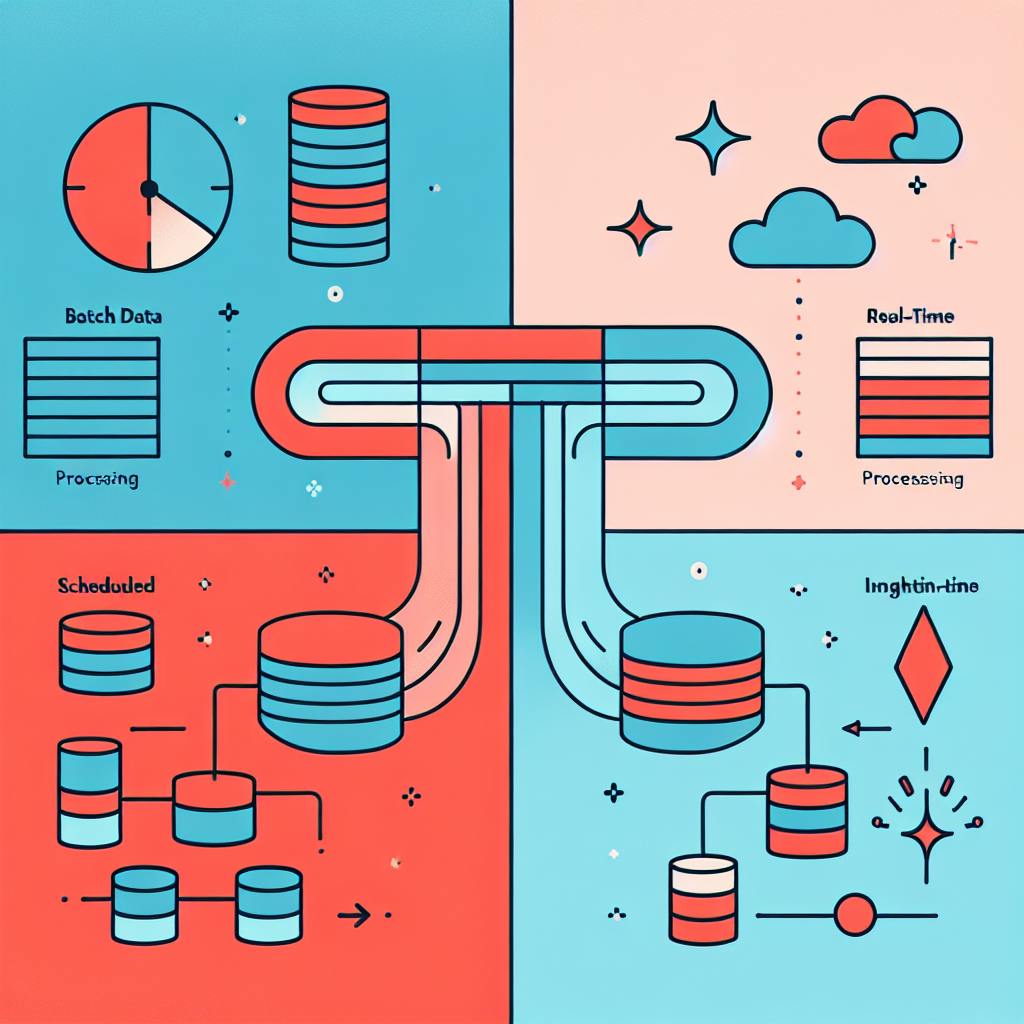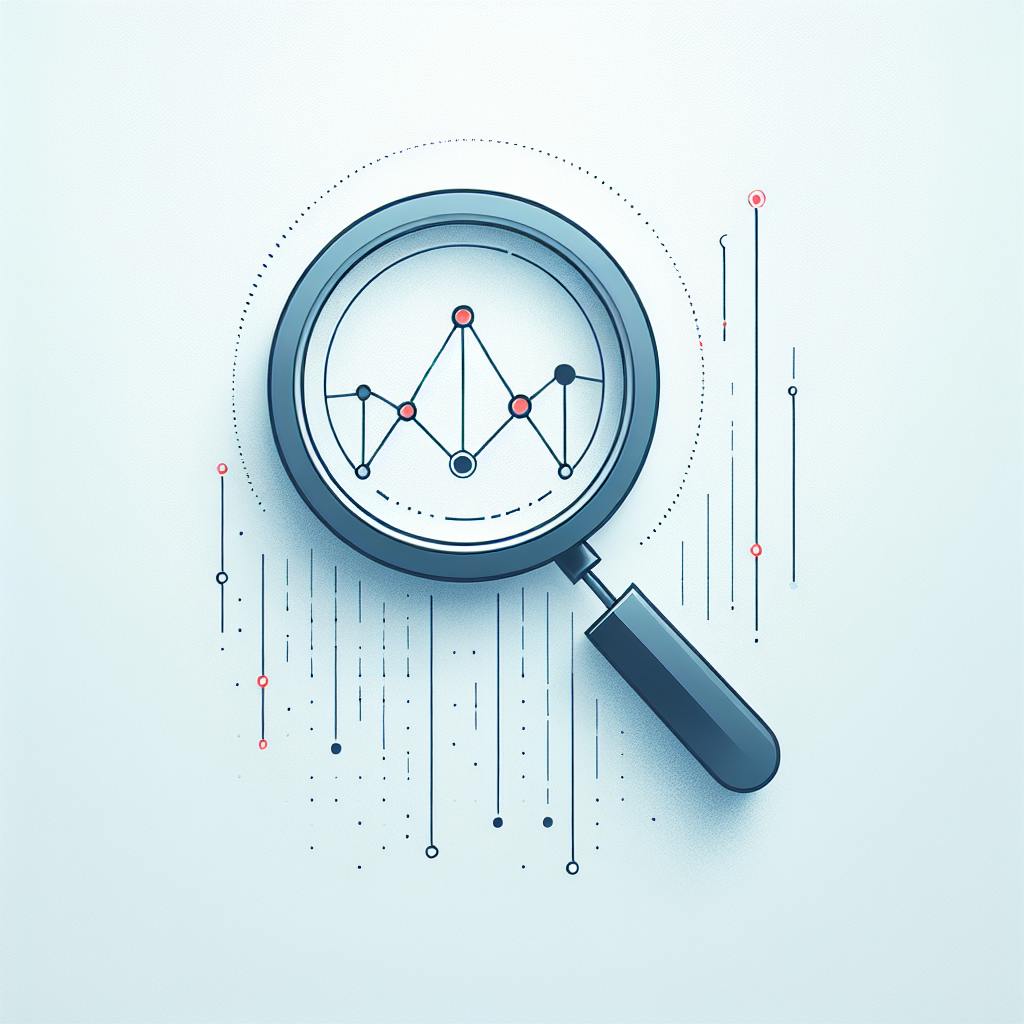AI is revolutionizing Azure infrastructure monitoring. Here's what you need to know:
- AIOps uses AI and machine learning to supercharge IT management in Azure
- It processes massive amounts of data, handles routine tasks, and spots problems before users notice
- AI-powered monitoring can boost productivity by up to 70% for certain tasks
Key benefits of AI in Azure monitoring:
- Faster problem-solving
- Automated routine tasks
- Real-time infrastructure updates
- Predictive issue detection
| Feature | Traditional Monitoring | AI-Powered Monitoring |
|---|---|---|
| Data processing | Manual, time-consuming | Automated, real-time |
| Issue detection | Reactive | Proactive and predictive |
| Scalability | Limited | Highly scalable |
| Accuracy | Prone to human error | More precise |
| Cost efficiency | Higher long-term costs | Lower operational costs |
To get started with AI monitoring in Azure:
- Enable data collection from all Azure resources
- Implement AIOps tools like Azure Monitor
- Configure data aggregation and smart filtering
- Set up automated responses for common issues
- Continuously learn and improve your AI models
By embracing AI in Azure monitoring, you'll future-proof your infrastructure, catch issues faster, and make smarter decisions based on data-driven insights.
Related video from YouTube
What is AIOps in Azure?

AIOps in Azure mixes AI and machine learning to supercharge IT operations. It's not just a cool feature - it's becoming essential for managing complex cloud setups.
AIOps basics
AIOps does three main things:
- Gathers data from your entire Azure setup
- Uses AI to find patterns and problems
- Fixes issues or suggests solutions automatically
Think of it as a super-smart, always-on assistant for your Azure infrastructure.
AIOps advantages
AIOps brings real benefits:
- Solves problems faster, often before they cause downtime
- Handles routine tasks, freeing up your IT team
- Helps make smarter decisions about your Azure setup
Here's what the numbers say:
| Metric | AIOps Impact |
|---|---|
| Market Growth | $80.2 billion by 2032 |
| Annual Growth Rate | 25.4% (2022-2032) |
| Downtime Reduction | Significant decrease |
These stats show AIOps is here to stay. It's changing how companies manage Azure infrastructure.
"AIOps has started to transform the cloud business by improving service quality and customer experience at scale while boosting engineers' productivity with intelligent tools." - Mark Russinovich, CTO of Azure
In action, AIOps is already making a difference. For example, it's boosting Azure IaaS virtual machine availability by predicting hardware failures and moving VMs to healthy nodes before problems hit.
Want to start with AIOps in Azure? Here's how:
- Use Azure Monitor's built-in AIOps features
- Start small - focus on one area of your infrastructure
- Add more data sources as you get comfortable
Current Azure monitoring tools
Azure Monitor is Microsoft's go-to tool for cloud monitoring. It's the Swiss Army knife for IT teams managing Azure infrastructure.
Azure Monitor features

Azure Monitor does it all:
- Collects data from Azure resources, apps, and operating systems
- Analyzes logs with Log Analytics
- Creates dashboards and workbooks for easy viewing
- Sends alerts when things go wrong
Microsoft saw a 40% jump in Azure Monitor use among big businesses in March 2023. That's huge.
Problems with manual monitoring
But here's the thing: manual monitoring in complex Azure setups? It's a pain.
| Issue | Impact |
|---|---|
| Too much data | IT teams drown in information |
| Slow reactions | Manual checks mean slow problem-solving |
| Missing the big picture | Humans can't spot every pattern |
| Can't keep up | As systems grow, manual monitoring falls behind |
Azure CTO Mark Russinovich puts it bluntly: "Azure environments generate so much data, it's overwhelming. We need AI-driven monitoring."
Companies are catching on. Sumo Logic's AI tool, working with Azure Monitor, helped a big retailer cut problem-solving time from 2 hours to 48 minutes. That's a 60% improvement.
And it's not just Azure Monitor flying solo. Gartner found that 65% of Azure users pair it with other monitoring tools for better insights.
The future? It's all about AI in monitoring. As cloud setups get more complex, we need smart tools to keep up and stay ahead of problems.
AI-powered monitoring for Azure
AI is changing Azure monitoring. It's not just about data collection anymore—it's about making sense of it all, quickly.
Spotting unusual patterns
Azure's AiDice algorithm finds weird stuff in your data. Here's why it's cool:
- Looks at tons of data points at once
- Finds issues you might miss
- Works FAST
Here's a breakdown:
| Feature | Benefit |
|---|---|
| Multi-dimensional analysis | Catches complex issues |
| Automatic pivot localization | Focuses on what matters |
| Real-time processing | Finds problems as they happen |
Microsoft used AiDice on their own VMs. They caught a memory leak causing low memory errors across nodes. Without AI, that's a needle in a haystack.
Forecasting future needs
AI doesn't just react—it predicts. Azure's AI tools guess what you'll need next.
AI forecasting can:
- Predict resource usage spikes
- Suggest when to scale up (or down)
- Help with budgeting
Take Microsoft's Dynamic Thresholds feature. It learns from your metrics' history and sets alert rules automatically. No more guessing what's "normal" for your system.
"AI is one of the most inspiring areas of technology evolution." - Microsoft
This isn't just talk. Azure's AI tools handle serious workloads. They're the same tools powering OpenAI and NVIDIA.
The bottom line? AI in Azure monitoring means fewer surprises, faster fixes, and smarter planning. It's your crystal ball for cloud ops.
Setting up AI monitoring in Azure
Want to future-proof your Azure infrastructure? Let's set up AI monitoring. Here's how:
Setup steps
1. Enable data collection
First, get your Azure resources to spit out monitoring data:
- Turn on diagnostics for VMs, databases, and other services
- Set up Application Insights for web apps
- Configure Log Analytics workspaces
2. Implement AIOps tools
Azure's got AIOps built-in. Here's how to use it:
- Head to Azure Monitor
- Click "Insights" on the left
- Pick "AIOps" and follow the wizard
3. Configure data aggregation
Grab data from everywhere:
| Data Source | Purpose |
|---|---|
| Servers | Hardware metrics, OS logs |
| Applications | Performance data, user behavior |
| Network devices | Traffic patterns, security events |
4. Set up smart filtering
Use Azure Monitor's ML to filter the important stuff:
- Go to "Alerts" in Azure Monitor
- Click "Smart Groups" for AI-powered alert grouping
5. Create automated responses
Make rules for common issues:
- Use Azure Automation for runbooks
- Link runbooks to specific alerts
Best practices
1. Data quality matters
Keep your data clean:
- Use standard naming
- Check your data
- Audit your collection process
2. Start small, scale up
Begin with a pilot:
- Pick a non-critical workload
- Watch it for 2-4 weeks
- Tweak before expanding
3. Continuous learning
Keep your AI sharp:
- Retrain monthly
- Use Azure Machine Learning to manage models
4. Human oversight
Don't let AI run wild:
- Have humans review critical decisions
- Create paths to escalate complex issues
5. Performance benchmarking
Measure AIOps impact:
- Set baseline metrics before you start
- Track improvements in MTTR, false positives, and costs
Main features of AI-enhanced Azure monitoring
Azure's AI monitoring is a game-changer. Here's why:
Improving performance automatically
Azure Monitor doesn't just watch. It acts:
- It predicts resource needs and scales automatically
- It spots weird patterns humans might miss
- It finds the root cause of issues, not just symptoms
Real-world impact? Electrolux slashed IT issue resolution time from 3 weeks to 1 hour. They also saved 1,000+ hours yearly on repairs.
Smarter alerts
Azure tackles alert fatigue head-on:
- Groups related alerts together
- Learns what's normal, cutting false alarms
- Prioritizes alerts so you focus on what matters
Check out this comparison:
| Feature | Old-School Monitoring | AI Monitoring |
|---|---|---|
| Alert volume | Tons | Up to 90% less |
| False alarms | Yep, lots | Way fewer |
| Finding the cause | Manual slog | AI suggests answers |
| Grouping alerts | Nope | Automatic |
Jason Higgins from Transport for Greater Manchester says: "We're fixing issues before users even notice. That's next-level alerting."
sbb-itb-9890dba
Tackling AI monitoring challenges
AI monitoring in Azure is great, but it's not all smooth sailing. Let's dive into two big hurdles:
Ensuring good data
AI models are like picky eaters - they need high-quality data to function well. Garbage in, garbage out.
What can go wrong?
- Events or logs go missing
- Fields are incomplete
- Data sets are biased
These issues can make AI predictions wonky or downright useless.
If 80 percent of our work is data preparation, then ensuring data quality is the most critical task for a machine learning team.
- Andrew Ng, AI expert at Stanford University
How to fix it:
- Set up data governance policies
- Use data cleaning and validation tools
- Create a data quality team
- Work with data providers
- Track data quality metrics
Following data rules
AI systems juggle tons of sensitive info. That means playing by strict data privacy rules.
Rules to watch out for:
- HIPAA (healthcare)
- PCI (payment cards)
- GDPR (EU data protection)
- CCPA (California privacy)
Breaking these can cost you big time. In 2018, companies shelled out $28.7 million in HIPAA fines alone.
Stay on the right side of the law:
- Figure out which rules apply to your data
- Team up with management on compliance
- Set up a compliance program
- Use Azure's built-in policy tools
| Compliance Area | Azure Tool |
|---|---|
| Security controls | Azure Policy Regulatory Compliance |
| Data processing | Azure OpenAI Service (with abuse monitoring off) |
| HIPAA/HITRUST | Azure Security and Compliance Blueprint |
Don't forget: compliance isn't just about tech. It's about processes too.
We're fixing issues before users even notice. That's next-level alerting.
- Jason Higgins, Transport for Greater Manchester
What's next for Azure AI monitoring
Azure AI monitoring is changing fast. Here's what's coming:
Better log analysis
NLP is about to change how we look at logs in Azure. Instead of digging through data by hand, NLP will help systems understand logs more like we do.
This means:
- Finding problems faster
- Figuring out why things went wrong more easily
- Spotting patterns in big data sets
Microsoft is adding smart NLP to Azure Monitor. This will help teams find issues quickly and learn more from their logs.
AI at the edge
Edge computing is bringing AI closer to where data starts. This makes monitoring faster and more efficient. Here's what's coming:
- Azure IoT Edge is getting better at on-device AI
- AI will work across cloud and edge devices, making things faster and smoother
Azure Stack Edge Pro is leading this change. It can do AI right where data is made.
| Feature | What it does |
|---|---|
| On-device AI | Faster insights |
| Spread-out processing | Handles more, uses less bandwidth |
| Edge-to-cloud sync | Keeps data in sync, more reliable |
This is big for places like factories and hospitals, where quick monitoring is key.
Mark Russinovich, Azure's CTO, says:
"AIOps will help our engineers do the right things faster to keep making our service better for customers and partners."
As this tech grows, we'll see:
- Systems that fix problems on their own
- Machines that know when they need fixing before they break
- Better security that catches threats faster
Azure AI monitoring is getting smarter and faster. By putting AI at the edge and using NLP for logs, Azure is changing how we manage systems.
Real examples of AI monitoring success
Fixing problems faster
AI monitoring in Azure has sped up problem-solving big time. Take American Airlines. They moved their customer data to Azure SQL and boom - faster solutions for customers. How? Automated maintenance and more flexibility.
Rockwell Automation's another winner. They used Azure Cosmos DB and Kubernetes Service to build a cloud data environment. The result?
- Auto-scaling
- Costs that grow with them
- Quicker issue responses
Saving money on cloud costs
AI monitoring isn't just about speed - it's a money-saver too. Check these out:
1. Swedbank's fraud detection upgrade
Swedbank moved their big data to Azure Cloud. What happened?
- Faster feature rollouts
- Better fraud catching
- Lower costs overall
2. Jotun's infrastructure savings
Jotun switched to Azure App Service. The payoff?
- No more routine maintenance
- More uptime
- Lower costs
- Faster market entry
3. Forrester study findings
Forrester looked at companies using Azure PaaS. The numbers speak for themselves:
| Metric | Result |
|---|---|
| 3-year ROI | 228% |
| Payback time | 15 months |
| Infrastructure savings | $19.1 million |
| Admin cost savings | $10.3 million |
These figures show how AI monitoring can seriously boost a company's bottom line.
"Microsoft runs on Azure AI." - Microsoft Azure Blog
This quote says it all. If Microsoft trusts AI monitoring for their own operations, you know it's the real deal.
Checking AI monitoring results
Important metrics
To measure AI monitoring in Azure, focus on these KPIs:
- Anomaly detection rate: How often does the AI spot unusual patterns?
- Response times: How fast does the AI identify and respond to issues?
- Cost savings: How much have you cut infrastructure and admin costs?
- Uptime improvements: Has system availability increased?
- Alert accuracy: How precise are the AI-generated alerts?
| Metric | Description | Target |
|---|---|---|
| Anomaly detection rate | % of correctly identified anomalies | >90% |
| Response time | Time from detection to resolution | <15 minutes |
| Cost savings | Reduction in infrastructure and admin costs | >20% annually |
| Uptime | System availability % | >99.9% |
| Alert accuracy | % of correct alerts | >95% |
Figuring out the payoff
To calculate the ROI for AI monitoring in Azure:
- Add up total costs (licensing, implementation, maintenance)
- Measure productivity gains
- Quantify time savings on routine tasks
- Assess infrastructure savings
- Evaluate business impact (customer satisfaction, time-to-market, revenue growth)
Microsoft's Copilot study found:
- 70% of users reported increased productivity
- 73% completed tasks faster
- 68% saw improved work quality
Forrester's study on Azure PaaS users showed:
- 228% ROI over 3 years
- $19.1 million in infrastructure savings
- $10.3 million in administrative cost savings
"ROI summarizes the targeted business value -- revenue, productivity, or cost saving -- versus the deployment cost -- development, maintenance, and opportunity cost." - Alain Biem, Chief Data Science Officer at New York Life
AI's impact often goes beyond just saving money. It can transform your entire operation.
Conclusion
AI is changing how we monitor Azure infrastructure. It's making things faster and smarter. Here's why it matters:
- ExaVault fixed problems 56.6% faster with AI.
- Providence saved $2 million in 10 months.
- Electrolux cut fix times from 3 weeks to 1 hour and saved 1,000 hours a year.
These aren't just numbers. They show real change. As Alain Biem from New York Life says:
"ROI summarizes the targeted business value -- revenue, productivity, or cost saving -- versus the deployment cost -- development, maintenance, and opportunity cost."
What's next for AI in Azure monitoring?
- It'll spot patterns in data that we can't see.
- It'll work faster by moving to edge devices.
Want to keep up? Here's what to do:
1. Use AI monitoring tools for Azure.
2. Make sure your data is good. AI needs good data to work well.
3. Look at what AI tells you and act on it.
AI isn't just a buzzword. It's changing how we work with Azure, right now.
FAQs
What is AIOps in Azure?
AIOps in Azure is like having a super-smart assistant for your IT operations. It uses machine learning to crunch data from your apps, services, and IT resources. Here's what it does:
- Makes your services run smoother
- Keeps things more reliable
- Takes action on data without you lifting a finger
Azure Monitor comes with AIOps tools that:
- Give you the inside scoop on what's happening
- Help you fix problems
- Predict when you'll need more capacity
- Spot app performance issues
- Flag weird resource behavior
Want to get fancy? You can even build your own machine learning pipeline in Azure Monitor Logs for custom analysis and responses.
How do I Monitor Azure infrastructure?
Monitoring Azure infrastructure isn't rocket science. Here's how you do it:
1. Use Azure Monitor
It's your go-to tool. It collects, analyzes, and acts on data from both cloud and on-premises setups.
2. Connect your existing tools
Got System Center Operations Manager? Hook it up to Azure Monitor.
3. Collect agent data
Azure Monitor Logs is like a vacuum for information from connected agents.
4. Analyze with queries
Use log queries to dig into your data. It's like being a detective, but for your IT infrastructure.
5. Apply solutions
Azure Monitor has solutions for specific monitoring needs. It's like having a toolbox full of specialized gadgets.
What does Azure Monitor offer? It's pretty sweet:
- Metrics and logs from ALL your connected resources
- A solid foundation for Log Analytics and Application Insights
- Proactive responses through notifications and runbooks
It's like having eyes and ears all over your Azure infrastructure.



